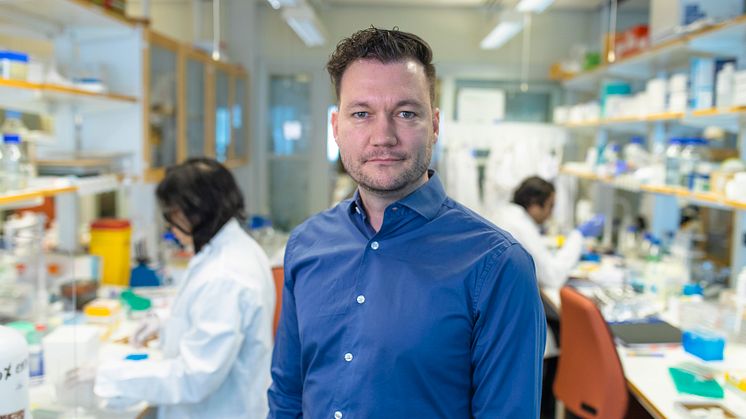
Press release -
New cells in connective tissue open up for strategy against pancreatic cancer
Researchers at Umeå University, Sweden, have discovered a previously unknown type of connective tissue cells that surround cancer cells in pancreatic tumours. The newly discovered cells counteract tumor development and may therefore be a target for research into new treatments for pancreatic cancer, which is one of the deadliest forms of cancer.
"We are still a long way from treatment, but this may show a viable path for further research," says Daniel Öhlund, associate professor at Umeå University and who has led the current study.
Pancreatic cancer is one of the cancers with the worst prognosis for survival. This is partly because it is often detected late, and partly because it responds poorly to traditional treatments with chemotherapy.
Researchers at Umeå University have investigated the connective tissue cells that surround the cancer cells in pancreatic cancer. These cells, called cancer-associated fibroblasts – CAF, play an important role in how the cancer develops. Several types of CAF stimulate the growth of cancer cells and contribute to the cancer cells being resistant to current chemotherapy treatments. They thus make the cancer more aggressive and more difficult to treat.
What the Umeå researchers have found is a previously unknown subgroup of CAF that has opposite properties. This group can instead hold back the cancer and open the way for the body's own immune cells to attack the cancer cells. However, this newly discovered group, called ifCAF – interferon response cancer-associated fibroblasts, is in the minority among different CAF around the cancer cells.
"The opening we see is whether it would be possible to stimulate the formation of this newly discovered and kinder cell type around the cancer cells at the expense of the connective tissue cells that make the cancer aggressive," says Daniel Öhlund.
The researchers at Umeå University are now proceeding to study potential drug substances that can promote the formation of ifCAF cells so that they increase in number and thus slow down the development of the disease. If successful, it could become a target for the development of future drugs.
About half a million people worldwide are diagnosed with pancreatic cancer every year
The study is published in the scientific journal Cancer Research.
Om den vetenskapliga publiceringen
Dissecting FAP+ Cell Diversity in Pancreatic Cancer Uncovers an Interferon-Response Subtype of Cancer-Associated Fibroblasts with Tumor-Restraining Properties
Joshua Cumming, Parniyan Maneshi, Mitesh Dongre, Tala Alsaed, Mohammad Javad Dehghan-Nayeri, Agnes Ling, Kristian Pietras, Cedric Patthey, Daniel Öhlund
doi: 10.1158/0008-5472.CAN-23-3252. Online ahead of print.
For more information, please contactDaniel Öhlund
Department of Diagnostics and Intervention, Umeå University
Phone: +46 90 785 17 27
Mobile: +46 70 555 40 86
E-mail: daniel.ohlund@umu.se
Topics
Umeå University is a comprehensive university and one of Sweden’s largest higher education institutions with around 38,000 students and 4,600 staff. We have a diverse range of high-quality educational programmes and research within all disciplinary domains and the arts. The University offers world-class educational and research environments and helps expand knowledge of global significance. This is where the groundbreaking discovery was made of the CRISPR-Cas9 gene-editing tool, which was awarded the Nobel Prize in Chemistry. At Umeå University, everything is just around the corner. Our tightly knit campus makes it easy to meet, collaborate and share knowledge, something that encourages a dynamic and open culture.

